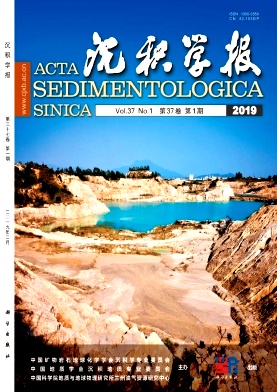End-Member Analysis for Surficial Sediment of Nanliujiang River Subaqueous Delta and Associated Sediment Dynamic Environmental Significance
doi: 10.14027/j.issn.1000-0550.2018.113
- Received Date: 2017-10-17
- Rev Recd Date: 2018-02-26
- Publish Date: 2019-02-10
-
Key words:
- subaqueous delta /
- end-member analysis /
- sediment dynamic /
- sediment transport /
- Nanliujiang River Estuary
Abstract: The sediment grain size distribution can be used to reveal sediment dynamic environments. Based on the grain size analysis of the surficial sediment collected from the Nanliujiang River subaqueous delta, Guangxi province, we identified the sediment sources and discussed associated sediment dynamic environments of the study area using end-member analysis and Folk classification. The analyzed results indicate that the surficial sediment can be divided into 9 types, including 5 types of sediment with gravel and 4 types of sediment with no gravel. The spatial distribution of the surficial sediment type is coincidental with environmental dynamic characteristics near the estuarine environment. According to end-member analysis, there are 5 distinguishable end-members (EM1-5), which represent 5 types of sediment dynamic environments. EM1 reflects the dynamic effects of wind waves and tidal currents on surficial sediments; EM2 indicates the dynamic process of surges on surficial sediments; EM3 reveals the effects of diluted Nanliujiang River water on surficial sediment transport processes; EM4 represents the relict sediment in the inner continental shelf; and EM5 is an end member disturbed by some noise, which may be induced by anthropogenic activities, such as coastal engineering construction. Based on our study results, if we try to use end-member analysis to study the sediment dynamic environment in an area with complex environments (e.g. small mountainous river estuary-shelf systems), we need to note two aspects: (1) we should take into consideration sediment sources and environmental dynamic characteristics in the study area; and (2) we can also combine other methods for mutual corroboration, such as parametric curve-fitting, and grain size trend analysis (GSTA).
| Citation: | LIN ZhenKun, WANG AiJun, YE Xiang. End-Member Analysis for Surficial Sediment of Nanliujiang River Subaqueous Delta and Associated Sediment Dynamic Environmental Significance[J]. Acta Sedimentologica Sinica, 2019, 37(1): 124-134. doi: 10.14027/j.issn.1000-0550.2018.113 |






 DownLoad:
DownLoad: